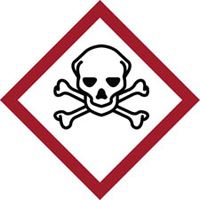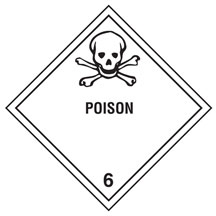| The Home page of ILPI's Safety Data Sheet (SDS) Resource, the leader in SDS information since 1995! | |
| The history and philosophy behind this resource. | |
| A curated collection of books and reference materials concerning Safety Data Sheets and closely related topics. | |
| Paste your plain text SDS into the SDS-Demystifier, and it will be converted into a hypertext-enriched document with links to detailed explanations of each key term. | |
| An extensive list of frequently asked questions about Safety Data Sheets including regulations, content, compliance, and more. | |
| A humorous take on Safety Data Sheet jargon. Fill in the blanks on our entry form to generate a personalized Unsafety Data Sheet to share with your coworkers. | |
| Since 1995, we've maintained this massive curated list of the best places to find Safety Data Sheets on the Internet. | |
| You are here! Way more than a glossary, this hypertext-enhanced resource covers hundreds of SDS-related terms and expert knowledge. Each entry includes both the SDS relevance and links to additional authoritative resources. | |
| Archived results of Safety Data Sheet related polls taken by some of our millions of site visitors | |
| The OSHA regulations behind SDS regulations, including the inspection guidelines and over 400 official interpretations letters under the Hazard Communication Standard | |
| Commercial suppliers of SDS authoring and management software as well as cloud compliance services. | |
| Commercial companies that will create SDS's for your specific needs as well as SDS translation companies. |

Safety signs, banners, and scoreboards? Get yours at Safety Emporium!
Definition
A poison is a substance that adversely affects one's health by causing injury, illness, or death. These are often marked with a skull and crossbones as shown on the right, below.
A substance that counteracts the effects of a poison is called an antidote.
Additional Info

Get your GHS-compliant labels and signs from Safety Emporium.
- Is known to be so toxic to humans as to pose a hazard to health during transportation, or
- In the absence of adequate data on human toxicity, is presumed to be toxic to humans because when tested on laboratory animals it has an LC50 value of not more than 5000 ml/m3 ... LC50 values for mixtures may be determined using the formula in Sec. 173.133(b)(1)(i) of this subpart."
- Is presumed to be toxic to humans because it falls within any one of the following categories when tested on laboratory animals (whenever possible, animal test data that has been reported in the
chemical literature should be used):
- Oral Toxicity. A liquid with an LD50 for acute oral toxicity of not more than 500 mg/kg or a solid with an LD50for acute oral toxicity of not more than 200 mg/kg.
- Dermal Toxicity. A material with an LD50for acute
dermal toxicity of not more than 1000 mg/kg.
- Inhalation Toxicity
- A dust or mist with an LC50 for acute toxicity on inhalation of not more than 10 mg/L; or
- A material with a saturated vapor concentration in air at 20 deg.C (68 deg.F) of more than one-fifth of the LC50 for acute toxicity on inhalation of vapors and with an LC50 for acute toxicity on inhalation of vapors of not more than 5000 ml/m3 or
- A dust or mist with an LC50 for acute toxicity on inhalation of not more than 10 mg/L; or
- Oral Toxicity. A liquid with an LD50 for acute oral toxicity of not more than 500 mg/kg or a solid with an LD50for acute oral toxicity of not more than 200 mg/kg.
- Is an irritating material, with properties similar to tear gas, which causes extreme irritation, especially in confined spaces."
Books Available
NOTE: We may collect a share of sales or other compensation from the links in the following list:
- "A Textbook of Modern Toxicology, Fourth Edition", Hardcover, 672 pages, 2010. Estimated price $86.94. Info and/or order .
- "Toxicology Handbook, Third Edition", Paperback, 560 pages, 2015. Estimated price $67.97. Info and/or order.
- "Poisoning & Drug Overdose, Seventh Edition", Paperback, 960 pages, 2017. Estimated price $68.75. Info and/or order.
- "Small Animal Toxicology, Third Edition", Paperback, 928 pages, 2012. Estimated price $76.51. Info and/or order.
- "Pick Your Poison: How Our Mad Dash to Chemical Utopia is Making Lab Rats of Us All", Hardcover, 256 pages, 2011. Estimated price $23.55. Info and/or order ILPI recommended.
SDS Relevance

Be sure you're in compliance with DOT placards and labels from Safety Emporium.
Treat poisonous materials with respect! Read the Safety Data Sheet to find out what ways a poison can kill you -- is it by inhalation, ingestion and/or skin contact? What precautions should you take with the material? What kinds of personal protective equipment (PPE) are recommended?
Remember to read the material label and SDS if a poison is ingested. For example, it is often bad to induce vomiting because some materials can cause additional chemical burns to the throat and esophagus upon regurgitation. If in doubt, contact the nearest emergency room or call the American Association of Poison Control Centers poisoning emergency number (800) 222-1222.
Don't fool around with poisons. Treat them with great respect at all times.
Further Reading
- American Association of Poison Control Centers or, in an emergency, call (800) 222-1222.
- Poison Treatment in the Home from Pediatrics, 2003, 112(5), pp 1182-1185.
- OSHA's page on Chemical Hazards and Toxic Substances includes recognition, evaluation, controls, standards and more.
- Poisoning at the NIH's MedlinePlus.
- The National Toxicology Program.
See also: activated charcoal, antidote, catharsis, cytotoxin, emetic, mus (mouse), Swiss Poison Class, toxic